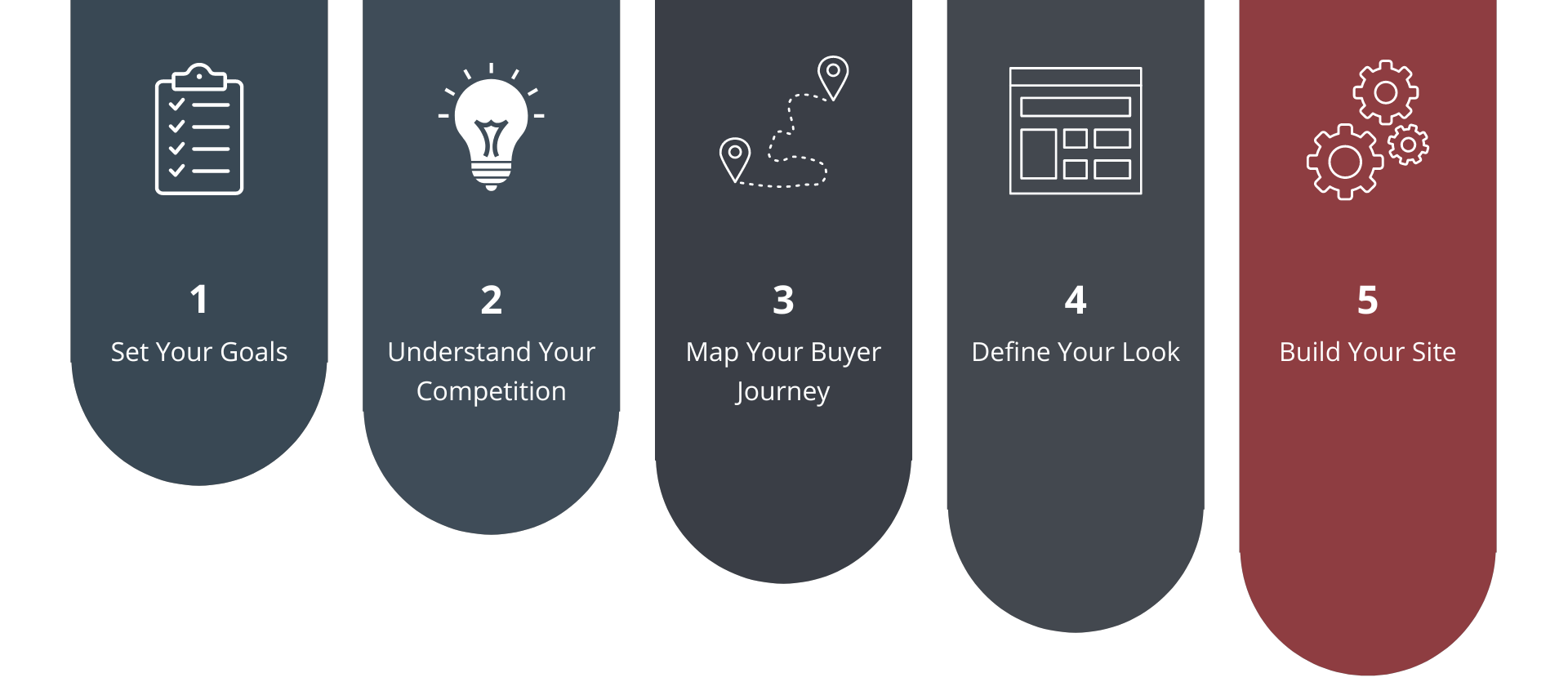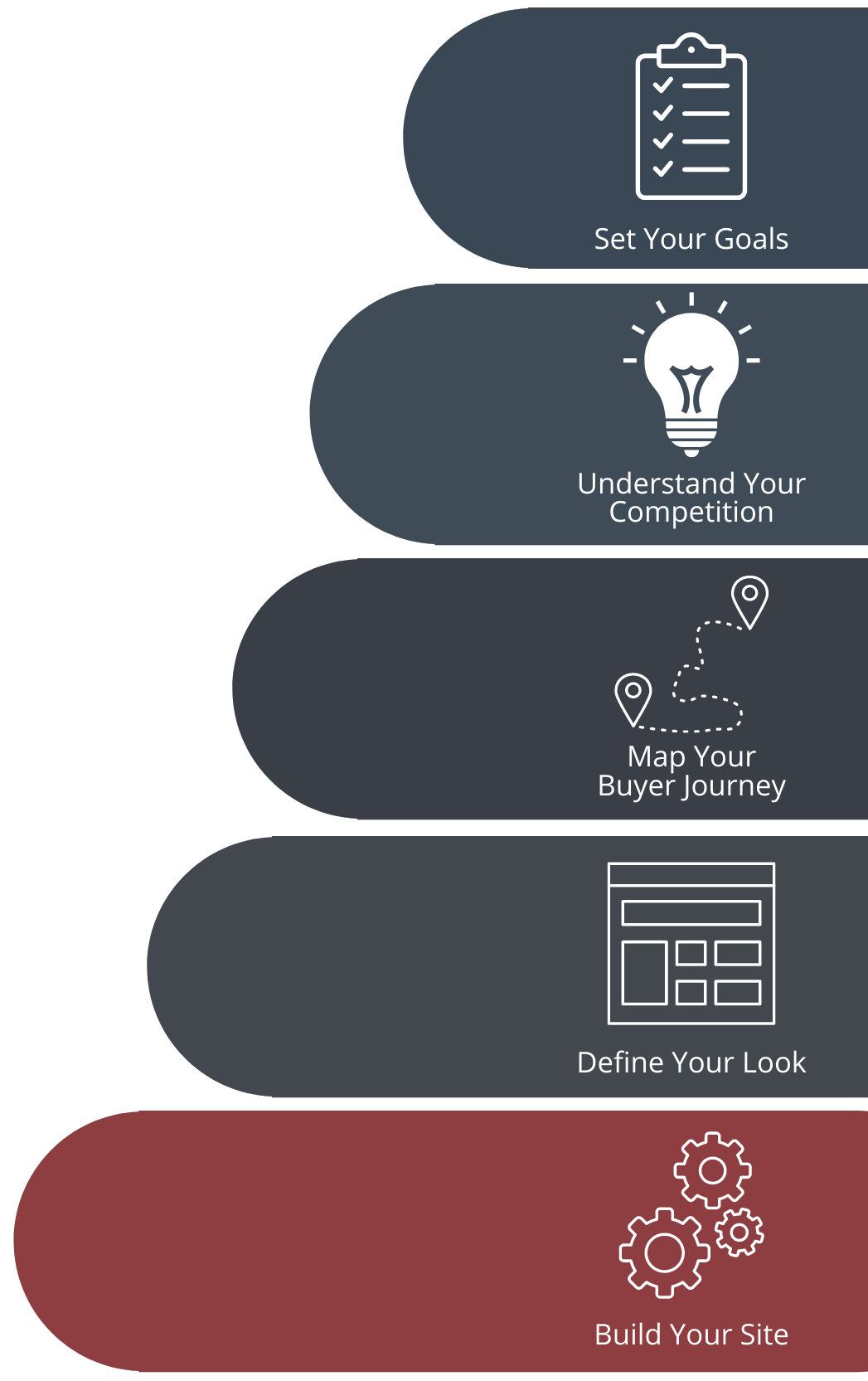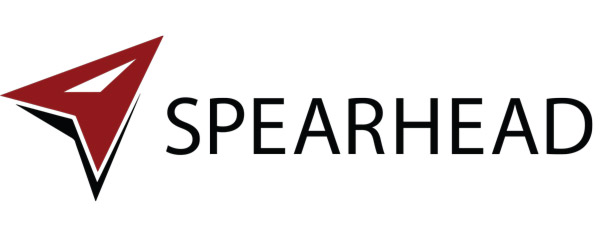

Understanding The Website Creation Process
Creating a compelling website begins long before the design phase. A high-performance website requires research, planning, and clear, measurable goals. Breaking down the process into steps ensures that your website’s foundation is a solid base to build your online presence.
The first question you must ask yourself is, “What do I want my website to accomplish?”. At Spearhead, we separate websites into three levels:
Credentials Site
- A brochure-style format
- Acquire real-time data from site visitors
- Conduct basic keyword research for SEO to drive organic website traffic from search engines
- Mobile Responsive
- Provide accurate information about the company, product, and services
- Offer an easy way to get in contact with you
Lead Generating
- Drive traffic, generate leads, and develop a process to nurture customers by using marketing automation features
- Diagnose problems and zero in on opportunities through a Key Performance Indicators (KPI) dashboard
- Advanced ongoing content publication for SEO and user experience
eCommerce
- Marketing Automation Tools
- Pre-programmed options based on buyers’ progression through the sales funnel
- Produce and implement high-end creative content to optimize system performance
- Performance management and dashboard reporting
Once you understand your website’s goal, Phase 1 can begin.
Phase 1 – SEO & Digital Strategy
- Competitor Review
- Keyword Research & Selection
- Buyer Journey
- Site Map
Understanding who your actual competitors are and how they leverage their online presence is key to finding gaps in keywords and content that can push your online visibility to the top. Becoming a true thought leader in your industry and crafting your strategies around producing quality content that is genuinely beneficial to your customers has to be at the forefront of your mind while taking every step along this process.
Additionally, mapping out your buyer’s journey from Awareness to Consideration to Decision allows you to anticipate your customer’s needs and proactively present meaningful information to them. Finally, to wrap up Phase 1, the structure of your site needs to lead your buyer on a predetermined path with a clear Call To Action. Simultaneously, your menu structure and URLs need to maximize the use of your identified keywords for optimal SEO.
Once the heavy lifting of Phase 1 is complete, it’s time to design your site!
Phase 2 – Design Direction
- Identify Benchmark Sites/Theme
- Brand Style Guide
- Home Page & Subpage Build
- Asset Collection & Organization
- Wireframe
- Copy
- Images
- Graphics
- Videos
Taking the time to research other sites to find layouts, fonts, functions, or an aesthetic that you like is essential when working with a designer. It allows your designer to understand your vision and bring it to life. During this phase, it’s time to collect all the pieces. Your images, graphics, copy, and videos are sorted and organized so a blueprint (the wireframe) of the site can be created.
Phase 3 is when our developers take everything we’ve researched, designed, and imagined and make it come to life.
Phase 3 -Build
- Performance Optimization
- Speed
- Indexing
- Mobile
- Keyword Optimization
- Alt-Tags
- Meta Descriptions
- Tracking Links & Codes
- CRM Integration (Ontraport)
- DNS, Host, SSL Go Live
While creating a visually appealing website is essential, the site’s performance will take you to the top. Mobile optimization, site speed, tags, descriptions, indexing, and security are crucial to creating a highly-ranked website. Tracking links and codes allow you to analyze traffic to maximize digital advertising. Ideally, a CRM, like Ontraport, should be integrated with your site to organize, nurture, and secure leads through pre-set automations that will take your sales team’s day-to-day burden and maximize your marketing ROI.
